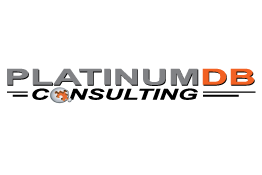SAP Plant Maintenance
Filter By
Browse By
- SAP Analytics and AI
- SAP Application Development and Integration
- All SAP Application Development and Integration
- SAP ABAP
- SAP ABAP Development Tools
- SAP ABAP Test Cockpit
- SAP API Management
- SAP BAPI
- SAP Basis
- SAP BRF
- SAP Business Application Studio
- SAP CMS
- SAP Design Studio
- SAP Development Tools
- SAP DevOps
- SAP EAI
- SAP EDI
- SAP Extension Suite
- SAP Fiori
- SAP Fiori Elements
- SAP Integration Suite
- SAP Low Code Application Development
- SAP Low Code Automation
- SAP Netweaver
- SAP Release Management
- SAP UI5
- SAP Web Application Server
- SAP Web IDE
- SAP Business Process Management
- SAP Center of Excellence
- SAP CIO
- SAP Customer Experience
- SAP Data and Data Management
- All SAP Data and Data Management
- SAP BW
- SAP BW/4HANA
- SAP Crystal Reports
- SAP Data Archiving
- SAP Data Center
- SAP Data Governance
- SAP Data Integration
- SAP Data Migration
- SAP Data Quality
- SAP Data Services
- SAP Data Strategy
- SAP Data Visualization
- SAP Data Warehouse Cloud
- SAP DMS
- SAP Document Control
- SAP EIM
- SAP ETL
- SAP ETL Tools
- SAP HANA
- SAP HANA Administration
- SAP HANA Deployment Infrastructure
- SAP HANA Studio
- SAP Master Data
- SAP Master Data Governance
- SAP MDM
- SAP Enterprise Architect
- SAP Enterprise Asset Management
- SAP ERP
- SAP Finance
- All SAP Finance
- SAP Accounting
- SAP AR AP
- SAP Asset Accounting
- SAP Billing Systems
- SAP BPC
- SAP BRIM
- SAP Cash Management
- SAP Central Finance
- SAP Controlling
- SAP COPA
- SAP Cost Center Accounting
- SAP Currency Risk
- SAP e-invoicing
- SAP FICO
- SAP Finance Automation
- SAP Advanced Financial Closing
- SAP Financial Consolidation
- SAP Financial Planning
- SAP FX Risk
- SAP General Ledger
- SAP Global Tax Management
- SAP Hyperion
- SAP Order to Cash
- SAP Payment Processing
- SAP Profitability Analysis
- SAP Rebate Management
- SAP S/4HANA Finance
- SAP SWIFT Compliance
- SAP Treasury Management
- SAP Universal Journal
- SAP Governance Risk and Compliance
- SAP Human Capital Management
- SAP Intelligent Technologies
- SAP Platform and Technology
- All SAP Platform and Technology
- SAP Business Technology Platform
- SAP Cloud
- SAP Cloud Connector
- SAP Cloud Integration Platform
- SAP Cloud Migration
- SAP Cloud Platform
- SAP Cloud Providers
- SAP Cloud Strategy
- SAP Digital Signature
- SAP Container Platform
- SAP HANA Enterprise Cloud
- SAP Digital Asset Management
- SAP Smart Forms
- SAP HEC
- SAP Digital Integration Hub
- SAP Hyperscalers
- SAP Infrastructure
- SAP Messaging
- SAP Quality and Testing
- SAP Security
- SAP Spend Management
- SAP Supply Chain Management
- All SAP Supply Chain Management
- SAP APO
- SAP Asset Management
- SAP Business Network
- SAP Digital Manufacturing Cloud
- SAP Digital Twin
- SAP EWM
- SAP IBP
- SAP Inventory Management
- SAP Label Printing
- SAP Logistics
- SAP Manufacturing
- SAP Manufacturing Automation
- SAP MES
- SAP MII
- SAP MM
- SAP MRO
- SAP MRP
- SAP Order Management
- SAP Plant Maintenance
- SAP PLM
- SAP Production Planning
- SAP S&OP
- SAP SD
- SAP SPM
- SAP Supply Chain Planning
- SAP Track and Trace
- SAP Transportation Management
- SAP System Administration
Plant Maintenance Defined
Plant maintenance is the service and repair of assets and equipment. During normal operations, plant equipment will experience wear and tear that require maintenance. This can include scheduled or non-scheduled maintenance. Types of maintenance can include preventative, predictive, corrective, and shutdown maintenance. Master data is essential for equipment, locations, catalogs, bill of materials, and counters like wear and tear. Automation allows a plant to identify, document, manage, and execute maintenance to streamline the process while managing labor and recording costs.
SAP Plant Maintenance
Key Components of SAP Plant Maintenance include:
- Inspection: Reviewing the condition of the systems or equipment.
- Preventive Maintenance: Maintaining ideal conditions of the systems or equipment.
- Repair: Restoring the systems or equipment.
Plant Maintenance Defined
Plant maintenance is the service and repair of assets and equipment. During normal operations, plant equipment will experience wear and tear that require maintenance. This can include scheduled or non-scheduled maintenance. Types of maintenance can include preventative, predictive, corrective, and shutdown maintenance. Master data is essential for equipment, locations, catalogs, bill of materials, and counters like wear and tear. Automation allows a plant to identify, document, manage, and execute maintenance to streamline the process while managing labor and recording costs.
SAP Plant Maintenance
Key Components of SAP Plant Maintenance include:
- Inspection: Reviewing the condition of the systems or equipment.
- Preventive Maintenance: Maintaining ideal conditions of the systems or equipment.
- Repair: Restoring the systems or equipment.
Four groups of users that benefit from plant maintenance are:
- Operations Managers: Obtain metrics, improve decision making, and plan budgeting.
- Production Line Workers: Manage maintenance issues promptly and effectively.
- Maintenance Personnel: Improve work processes and efficiency by reviewing maintenance records.
- Purchasing Departments: Purchase parts and services.
3 goals are to:
- Maximize availability of plant operations through planned maintenance.
- Extend the life span of the plant, equipment, and machinery by minimizing the wear and tear.
- Reduce the cost of down time due to improper maintenance.
The importance of plant maintenance is to keep machinery, parts, and equipment in good operating condition to avoid any production downtime. Keeping the maintenance at top of mind can help control expenses and keep accurate budgeting.
Vendor partners to support your plant maintenance include: Thales, Forcam, and SAP .
Key Considerations for SAPinsiders are:
- Improve the Efficiency of Your SAP Plant Maintenance Operations by Automating Master Data Processes. This whitepaper outlines an approach to improve operation efficiency through SAP data management.
- How to Use Data Collection to Run a Remote Warehouse. Robert Brice explains how to rethink traditional approaches to data collection and process operations in your
- Discover SAP’s Approach to Intelligent Asset Management: The convergence of EAM and APM. Explore business capabilities and asset lifecycle management needs.
814 results
-

 Premium
Premium
New SD Plant Functionality in CRM 2005
Reading time: 7 mins
SAP CRM 2005 contains several basic R/3 Sales and Distribution (SD) features to help improve the sales order process. Understand the vendor availability check functionality in CRM 2005 and the settings required to integrate GATP in your CRM system. Key Concept Information about these Sales and Distribution (SD) features is available in the SAP CRM...…
-

 Premium
Premium
Capture the Value of Stock in Transit Using a New Business Function in Enhancement Package 5
Reading time: 15 mins
The classic sales process is a three-step procedure: create a sales order, create a delivery with reference to the sales order, and invoice for the delivered goods. Handling the potential time gap between the goods issue and the invoice has long been an issue for organizations trying to keep their financial accounts and Profitability Analysis...…
-

 Premium
Premium
Two Methods to Procure Third-Party Services in SAP EAM
Reading time: 16 mins
Organizations sometimes seek services from external agencies for maintenance functions. Learn how materials management and plant maintenance functions integrate for handling those external services in Enterprise Asset Management. Key Concept You can generate a single purchase order per breakdown occurrence or preventative maintenance requirement with external services. For periodical services, you can settle each service...…
-
-

- SAP MII
 Premium
Premium
What You Need to Know About SAP xMII to Enable Adaptive Manufacturing
Reading time: 13 mins
Learn about SAP xApp Manufacturing Integration and Intelligence (xMII) and see how you can use it to improve your manufacturing processes. Through several real-world examples, see how xMII helps your operation monitoring and control, quality management, and manufacturing synchronization. Then, take a look at the technology behind xMII. Key Concept SAP xApp Manufacturing Integration and...…
-

From SAPinsider Las Vegas 2025: How Owens Corning Used AI-Powered Predictive Maintenance to Move to Reliability as a Service Model
Reading time: 4 mins
At SAPinsider Las Vegas 2025, Jeff Witt from Owens Corning discussed how advanced condition monitoring and predictive maintenance, utilizing SAP Intelligent Asset Management and wireless sensors, have transformed asset management by reducing downtime and costs through real-time data integration and proactive maintenance strategies.
-

Centralize Forecasting for Customer and Interplant Demands Using Planning Materials
Reading time: 11 mins
In a typical supply chain, organizations have field locations or distribution centers that stock inventory to cater to customer demands (sales orders) and the stocks are replenished by the manufacturing locations via stock transport orders. Without an SAP planning strategy, manufacturing locations would have trouble forecasting for sales orders and stock transport orders. Organizations can…
-

 Premium
Premium
How to Execute Heuristics in Supply Network Planning
Reading time: 23 mins
Learn the process flow of an SAP Advanced Planning and Optimization (APO) supply network planning (SNP) heuristics run. Follow a step-by-step procedure to configure and run three types of heuristics and interpret the results. Key Concept An heuristics run can be broadly classified into three categories: location, network, and multi-level heuristics. The main characteristics of...…
-
-

 Premium
Premium
Distributed Network Model Lets You Adapt to Unexpected Supply Chain Interruptions
Reading time: 9 mins
Learn about the distributed network model for warehouse storage and determine the best ways you can apply it to your business. Key Concept In a distributed network model you have several warehouses in different areas. It allows you to ship materials to customers more efficiently because you ship from a warehouse near them. The distributed...…
-

 Premium
Premium
How to Develop Real-Time Analytics and a Monitoring Dashboard on SAP MII SSCE
Reading time: 27 mins
Learn how to use the Self-Service Composition Environment (SSCE) in SAP Manufacturing Integration and Intelligence (SAP MII) 15.0 to quickly develop real-time analytics and monitoring dashboards by fetching data from multiple sources. Key Concept The Self-Service Composition Environment (SSCE) is a new feature in SAP Manufacturing Integration and Intelligence (SAP MII) 15.0 that enables you...…
-

 Premium
Premium
Achieve Complete Integration of Your Inter-Company Transactions within SAP ERP
Reading time: 12 mins
Take a detailed look at the configuration steps within SAP ERP that are necessary to process an inter-company transaction from start to finish. Key Concept Many companies consist of multiple subsidiaries and each is regarded as a separate legal entity. Some companies create this type of distinction for legal and regulatory reasons, while others simply...…
Become a Member
Unlimited access to thousands of resources for SAP-specific expertise that can only be found here.
Become a Partner
Access exclusive SAP insights, expert marketing strategies, and high-value services including research reports, webinars, and buyers' guides, all designed to boost your campaign ROI by up to 50% within the SAP ecosystem.
Upcoming Events
Related Vendors
Your request has been successfully sent


